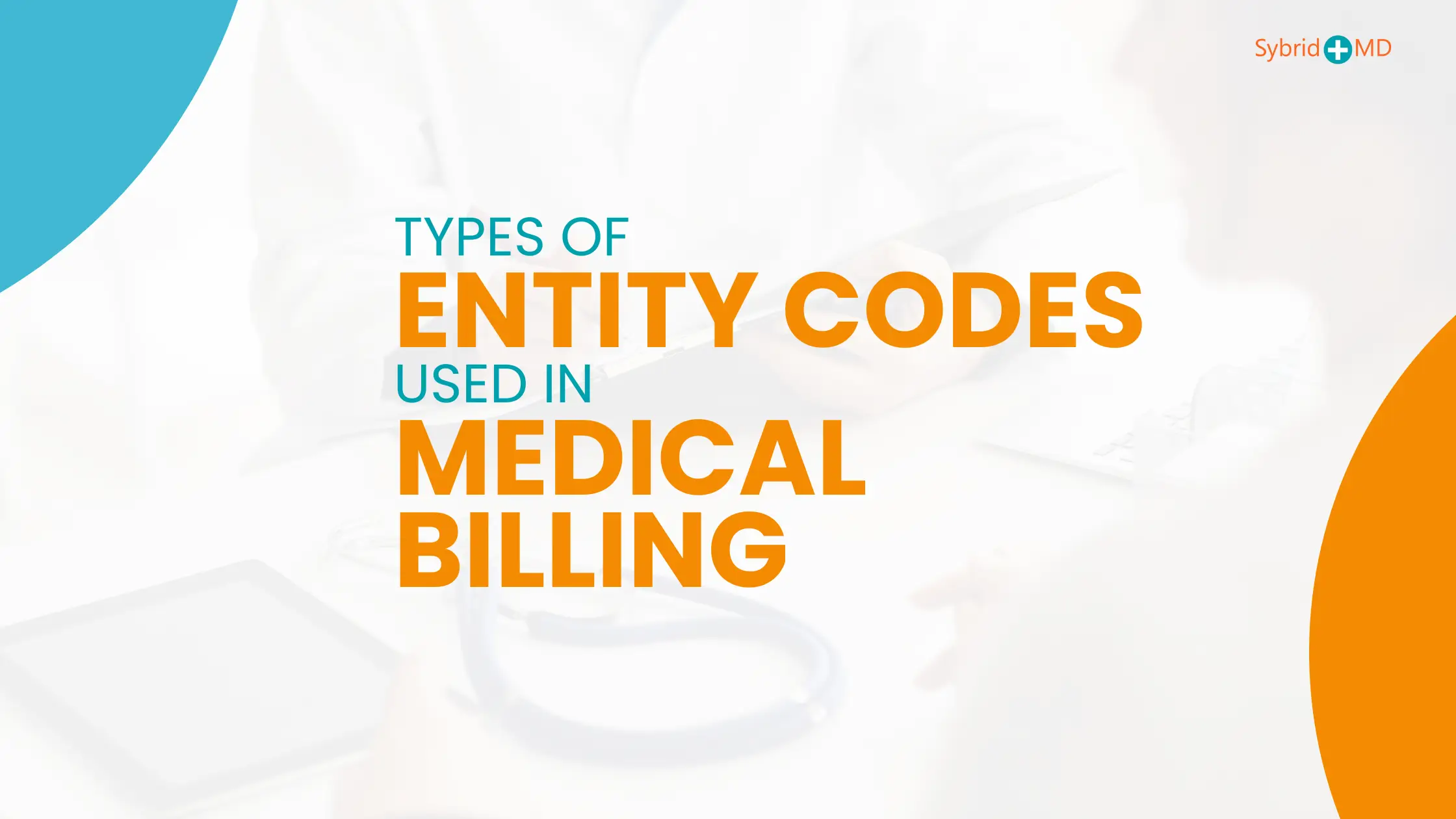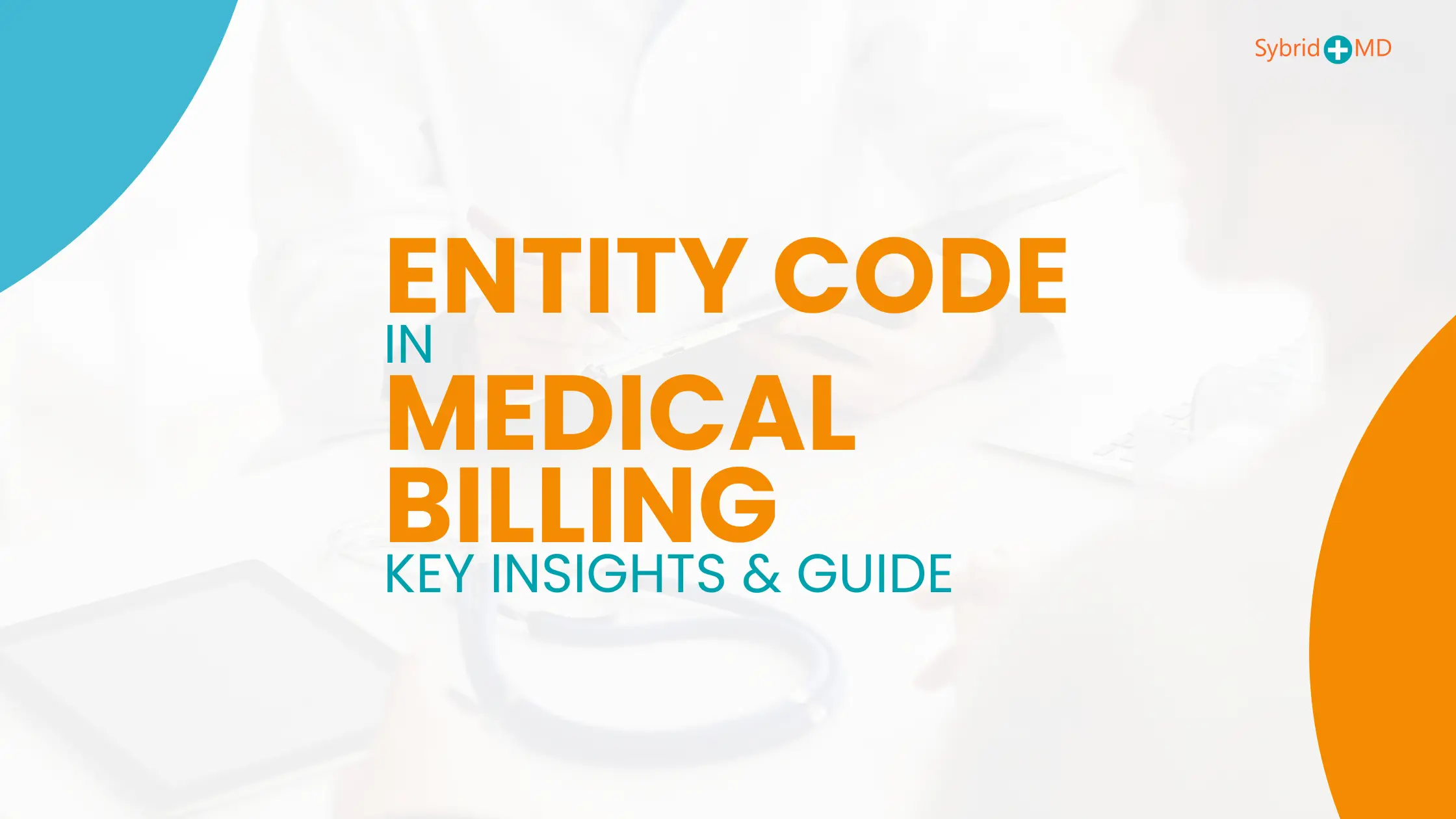We especially see an entity code in medical billing as a type of authorization or billing stemming from a different type of entity that is submitting or processing a claim on behalf of a patient. This information communicates the differences between different entities, such as healthcare provider, facilities, insurance, and other entities.
This complex environment employs many codes and terminologies that are used throughout the healthcare journey to simplify the submission and processing of healthcare claims for providers and payers. Out of these, the entity code in medical billing is one of the important aspects. But what is an entity code for billing, and why is it important? In this article, we will take a closer look into the entity code medical billing, what it is, and how it is essential in the timely and accurate processing of claims.
What Is an Entity Code for Billing?
The entity code for billing is used precisely within the healthcare billing system to identify the nature of the entity involved. This could be a health care provider, a facility, an insurer or another organization. This makes it possible to provide appropriate billing information by uniquely identifying the respective parties involved and avoiding potential confusion and errors.
The second of which is to know whether the claim submitted is from a physician’s office, a hospital or a laboratory through entity code medical billing. This makes it essential since there are multiple categories of entities involved against every element of a medical insurance billing process. Entity code billing is to ensure that a claim is received by the proper entity for processing and reimbursement.
Why Is the Entity Code in Medical Billing Important?
The entity code in medical billing is also helpful as it make the billing process simpler. Most importantly, it guarantees accurate billing. Using appropriate entity code medical billing ensures accurate claims processing by healthcare providers and insurers, minimizing any possibility of errors which could result in delay in the re-imbursement process or the claims being denied. If it is not, it could also potentially send the claim to the wrong person and cause all complications and delays.
Entity code medical billing is crucial not only for enhancing accuracy but also for ensuring compliance with industry standards and regulations. An infrastructure of rules for providers and insurers to follow to maintain their standing with regulatory bodies and avoid fines. Dealing with the correct entity code for billing ensures that patients that use the services of a healthcare organization are compliant with these practices and prevents facing any legal trouble.
The design of the entity code in medical billing eliminates redundancies in the claims process. By clearly indicating the party involved, the claim can be sent to the appropriate department almost immediately, reducing office delays. Such one-off special codes can help payers and providers expedite the process to the benefit of both patients who depend on timely reimbursement to exist.
Entity code medical billing helps to prevent fraud. It is a means of ensuring that claims are associated with legitimate, registered health providers or organizations, as each entity code has to be linked to such a provider or organization. This double-verification process reduces the chance that false claims will be submitted. Such a combination enables insurance companies and payers to cross-verify the authenticity and proper registration of concerned healthcare entities. The process helps in safeguarding the billing system for reducing the risk of fraud and protecting the integrity of the healthcare reimbursement process.
Types of Entity Codes Used in Medical Billing
There are two main types of entity codes for medical billing: provider entity codes and facility entity codes. Provider entity codes identify individual healthcare providers, such as doctors or specialists, while facility entity codes are assigned to healthcare facilities like hospitals or clinics. These codes help streamline the billing process by clearly distinguishing between the parties involved:

Provider Entity Codes:
They are utilized to identify individual healthcare providers like doctors, surgeons, specialists, or anyone else who is licensed. This identifies them and connects them to the services they provide and the claims they submit. This also aids in making sure that reimbursement for services is addressed to the appropriate provider. Entity code medical billing, for example, will channel payment to that specific physician if that specific specialist performs a procedure, keeping you from being confused and ensuring prompt payment.
Facility Entity Codes:
These are designated for health systems like hospitals, outpatient clinics, nursing homes, diagnostic labs, etc. They allow you to know where the medical services are offered. When it comes to medical billing, the Entity code governs what facility will get paid for the provided services. For example, when a patient is treated at a hospital, the hospital’s unique entity code verifies that a claim gets directed and reimbursed to that hospital, not a separate provider with the same name.
Non-Healthcare Entity Codes:
Not every unit that is part of the billing process is classified as a healthcare provider. Many organizations not directly involved in healthcare delivery contribute to the process, including administrative offices, billing services, and medical equipment suppliers. They have assigned unique entity codes to these entities to separate them from real medical providers and facilities.
Insurance Entity Codes:
Insurance entities, such as payers that process and reimburse claims, also have their own entity codes. These codes facilitate claim submission to the correct insurer for payments. The numbers help the healthcare provider and billing professional communicate efficiently and effectively with the correct payer.
The diversity of these codes allows the healthcare billing system to accurately identify and categorize all entities involved in the billing and reimbursement process, from providers to insurance companies.
How to Use Entity Codes in Medical Billing
It is crucial to use the entity code in medical billing to ensure that claims are processed without a hitch. This requires caution on the part of healthcare providers and billing professionals, to avoid submitting claims to insurance companies with the wrong code. Getting the data entry correct is critical; if the entity code for billing is input incorrectly, it may end up causing a claim to go to the wrong location, merge into a delay, or be outright rejected.
- It is important to check with payers to confirm which entity code medical billing is required for specific claims. Different insurance companies or payers may have specific requirements for entity codes, so verifying this information beforehand can prevent errors and rework.
- It is also critical to follow any changes with the new entity code medical billing system.
However, codes do change over time, especially as healthcare technology progresses or new regulations come into effect. Healthcare providers can stay compliant and continue using the right codes if they stay up-to-date with these changes.
- NPI (National Provider Identifier) blacklisting is also a standard method of functioning in the medical billing ecosystem.
NPI numbers can also be associated with entity codes for billing purposes, adding an additional layer of verification for the healthcare provider or in the medical system. Matching these identifiers is another form of ensuring the integrity of the billing process.
Common Mistakes to Avoid with Entity Codes in Medical Billing
Entity codes in medical billing are very important, but medical billers make mistakes with them all the time. Common mistakes include the use of incorrect codes, failure to update codes when an entity’s status changes, and missing or incomplete information.
- Common errors include invalid entity codes, which can result in the denial of claims or delays in payment. For example, if a doctor submits a claim with an incorrect code, that operation might be sent to the wrong payer, and it would take longer to process.
- A second mistake is not updating entity codes when an entity’s status changes, i.e., a change of address or ownership.
- The claim would then be incorrectly processed, maximizing potential denials due to missing codes.
Lack of information could lead to denial of claims, too. Without entity codes for billing or not enough codes populated on a claim, the insurer may not be able to process the claim. Just make sure that there are no typos and that all the codes are in place.
Finally, check the entity code with the payer before claims are submitted. Each insurer may differ in coding, and errors and delays can occur if the proper code isn’t confirmed.”
Conclusion
An entity code in the medical billing process is an important component. It ensures correct billing, adhering to regulations, and efficient processing of claims. Healthcare providers will avoid errors or delays in making claims and increase their chances of getting reimbursed quickly and in the right way, thus ensuring seamless billing operations.
With the proper entity code medical billing, fraud prevention is increased, and claims can be routed to appropriate parties, creating a more secure and efficient system. For healthcare providers, insurers, and professionals involved in billing, knowledge about the proper use of these codes is a necessity to keep the medical billing system functional and legitimate.

